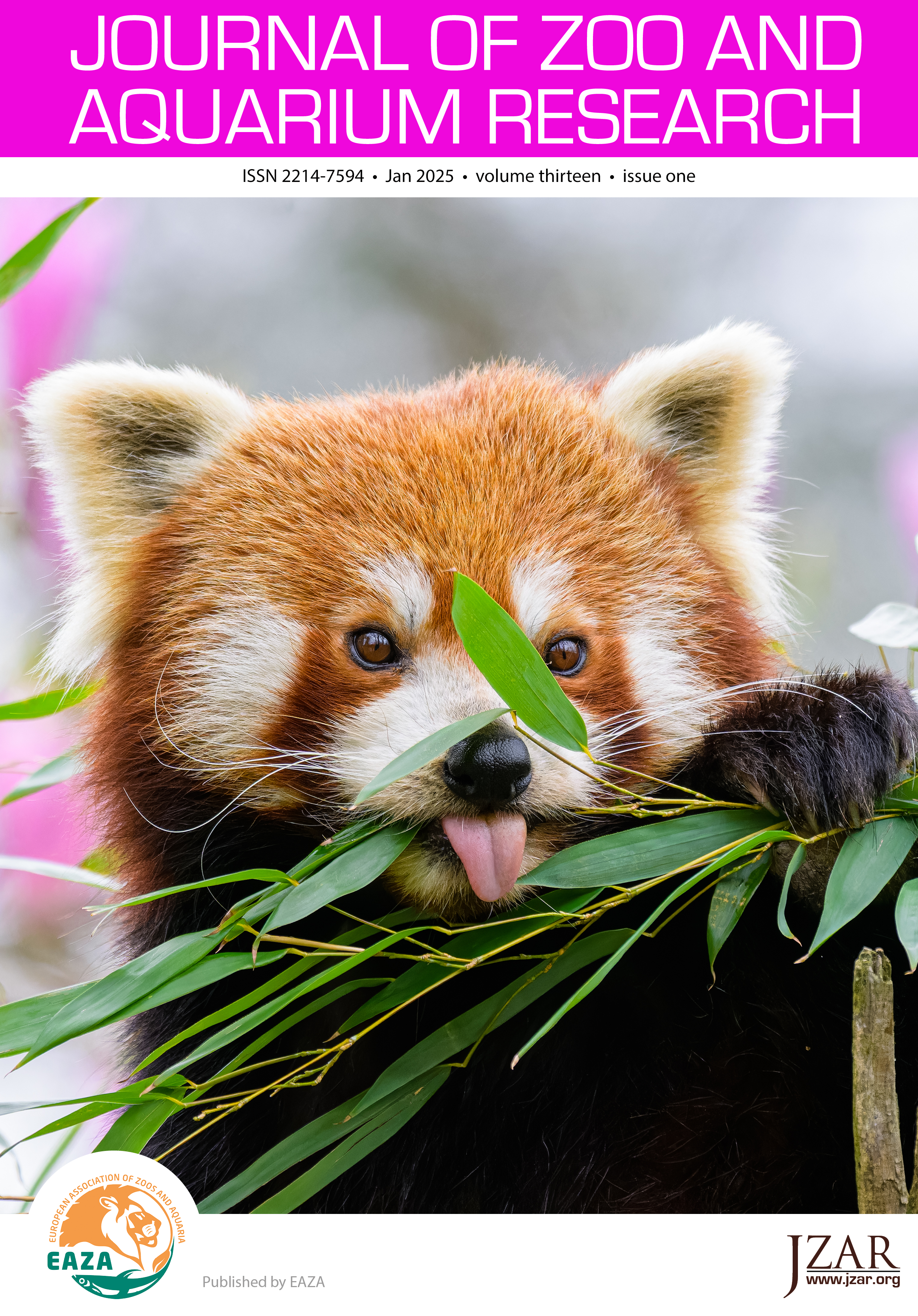Social enrichment to reduce pacing in a solitary housed male lion-tailed macaque Macaca silenus
DOI:
https://doi.org/10.19227/jzar.v13i1.703Keywords:
abnormal behaviour, enrichment, pacingAbstract
Environmental enrichment is frequently used to improve the captive environment, aiming to enhance the quality of captive animal care. Social enrichment is considered to be the most effective form of enrichment for captive primates, particularly in the reduction of abnormal behaviours. This intervention was focused on reducing pacing behaviour exhibited by a singly-housed male lion-tailed macaque Macaca silenus by introducing another male. Data were collected using instantaneous scan sampling before and after the introduction of the second male. Data were then analysed using randomisation tests, which revealed that the introduction of the second male significantly (P<0.01) reduced the frequency of pacing in the first male macaque. This study has revealed that although the formation of all-male groups, particularly in lion-tailed macaques, is difficult it can also be beneficial, providing necessary social contact especially in individuals that are already familiar with one another.
Downloads
Published
How to Cite
Issue
Section
License
JZAR fulfils the DOAJ definition of open access and provides free and open access to the full text of all content without delay under a Creative Commons licence. The copyright holder of JZAR publications grants usage rights to third parties, allowing for immediate free access to the work and permitting any user to read, download, copy, distribute, print, search, or link to the full texts of articles.







